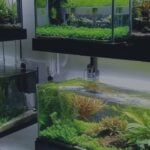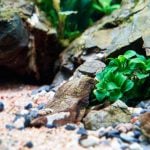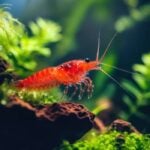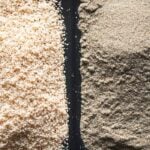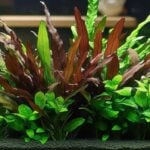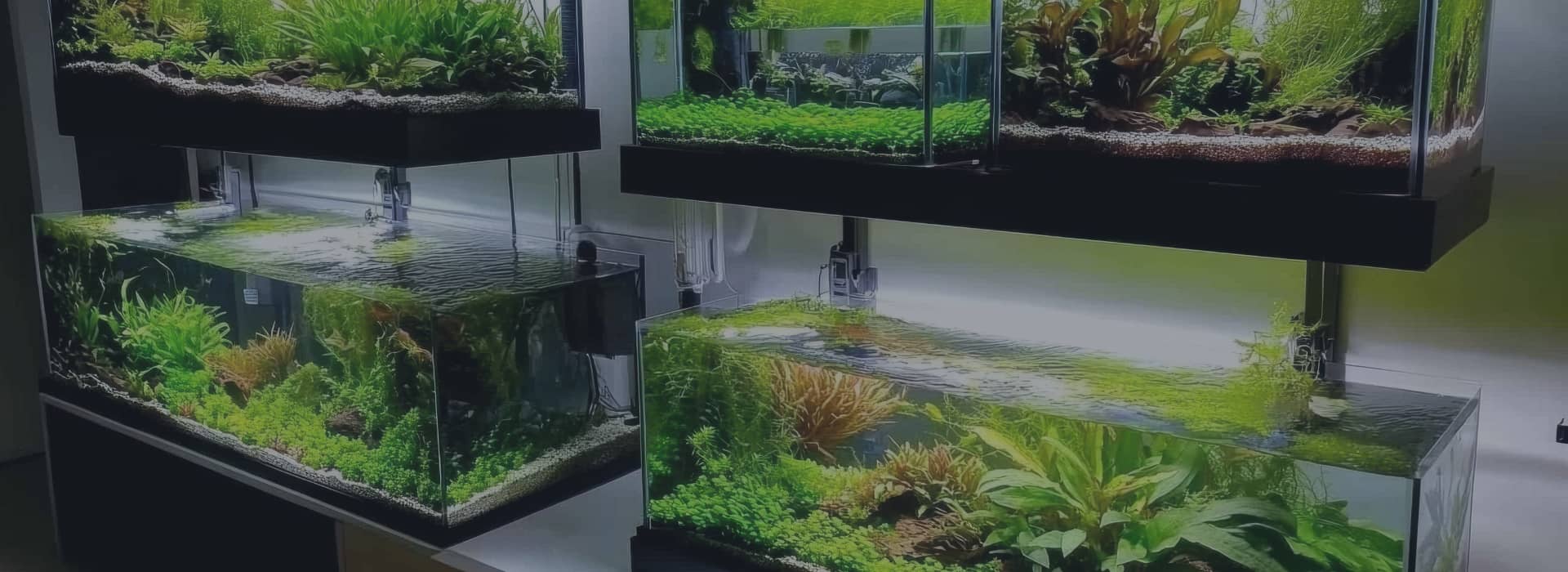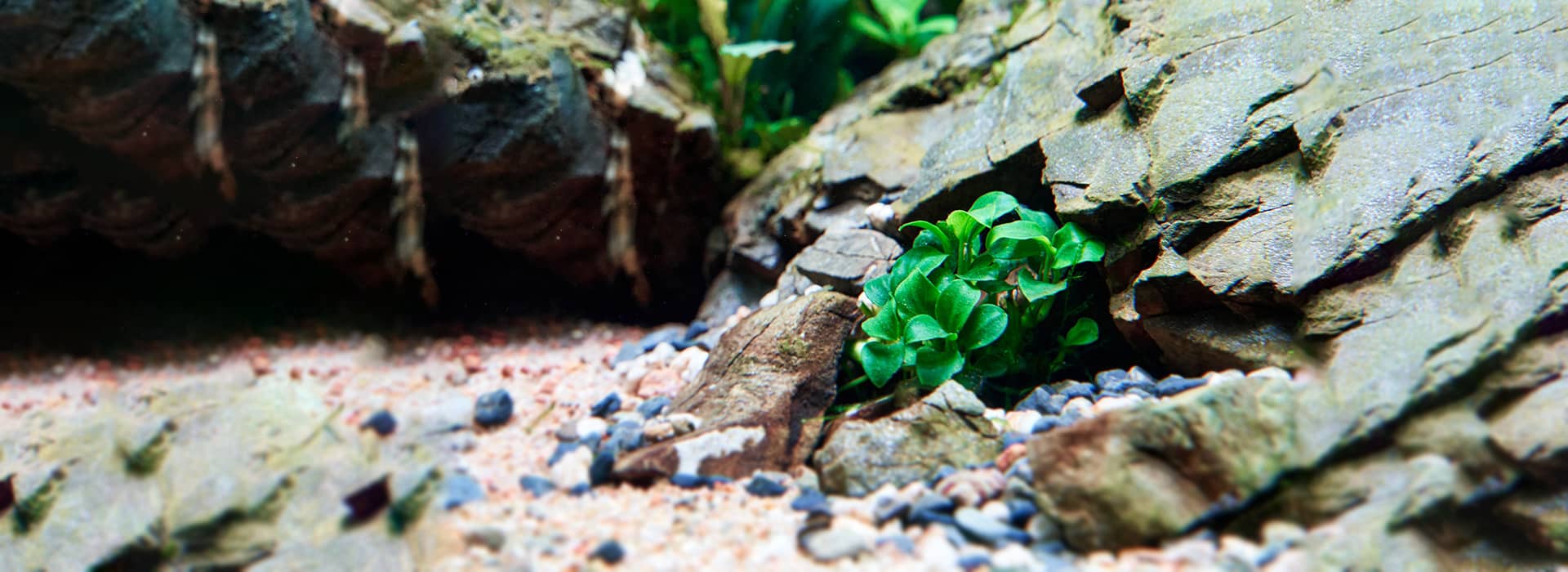If I could keep only one family of fish then that would undoubtedly be the Tetras. They are a very popular choice for aquarium enthusiasts, and for good reason. These small, colourful fish are an excellent choice for both beginner and experienced aquarists.
Tetras are known for their vibrant colors and striking patterns. There are over 150 different species of tetras, each with their own unique coloration and markings. Tetras also tend to be easy to care for. Choosing from such a vast array can be daunting. So, here are the top 10 Tetra Tropical Fish Types
- Neon Tetra
- Cardinal Tetra
- Rummy Nose Tetra
- Black Skirt Tetra
- Serpae Tetra
- Glowlight Tetra
- Ember Tetra
- Lemon Tetra
- Bleeding Heart Tetra
- Congo Tetra
Let us take a closer look at each of these fish.
Neon Tetra
| Scientific name | Paracheirodon innesi |
| Common name | Neon Tetra |
| Temperature | 72°F-80°F (22°C-27°C) |
| pH | 5.5 to 7.0 |
| Colour | Neon blue, red |
| Care Level | Easy |
| Maximum size | 1.5 inch or 3.8 cm |
Neon tetras are one of the most popular and recognizable species of tetra fish. These small, colourful fish are native to the streams and rivers of South America, and are widely known for their striking appearance and peaceful nature.
Appearance
Neon tetras are named for their vibrant, neon blue and red coloration. Their bodies are primarily blue-green on top and bright red on the bottom, with a thin, black line separating the two colors. This creates a distinct and eye-catching appearance that makes neon tetras highly sought after. Adult neon tetras typically grow to be around 1.5 inches in length, making them well-suited for smaller aquarium setups.
Natural Habitat
In the wild, neon tetras can be found in the clear, slow-moving waters of the Amazon basin. They are a shoaling species, meaning that they prefer to live in groups with others of their kind. This social behavior is important to maintain in the home aquarium, as neon tetras can become stressed and unhappy if kept alone or in small groups.
Tank Setup
When setting up a home aquarium for neon tetras, try to replicate their natural habitat as closely as possible. This includes using soft, acidic water with a pH between 5.5 and 7.0, as well as plenty of plants and hiding places. Live plants such as java moss or Amazon sword are recommended, as they provide cover for the fish and help to maintain water quality.
Temperature
The ideal water temperature for neon tetras is between 72°F-80°F (22°C-27°C), which can be achieved using an aquarium heater. Sudden changes in temperature or water chemistry can be stressful for the fish and may lead to illness, so monitor water parameters regularly.
Feeding
Neon tetras are omnivores and will eat a variety of foods, including flakes, pellets, frozen foods, and live foods such as bloodworms or brine shrimp. Provide a varied diet to ensure they receive all necessary nutrients. Overfeeding should be avoided.
Health
Common health problems for neon tetras include neon tetra disease, fungal infections, parasitic infections, and bacterial infections. Maintaining good water quality, providing a varied diet, and avoiding overcrowding can help prevent these issues. If a fish appears sick, it should be removed from the tank and treated immediately to prevent the spread of disease to other fish.
These fish loose their colour in the dark which is completely normal. However, if they stay like that even after the lights have been on for sometime, it can indicate stress or a sickness.
Cardinal Tetra
| Scientific name | Paracheirodon axelrodi |
| Common name | Cardinal Tetra |
| Temperature | 72°F-82°F (22°C-28°C) |
| pH | 5.5 to 7.0 |
| Colour | Neon blue, red |
| Care Level | Intermediate |
| Maximum size | 2 inches or 5 cm |
Cardinal tetras are another popular and visually striking species of tetra fish that are often compared to neon tetras due to their similar appearance. In fact, they are often confused with each other. However, they are two different species with slightly different care requirements.
Appearance
Cardinal tetras are also possess a vibrant, blue and red coloration. They are neon blue coloured on the top half of their body and bright red coloured on the bottom half. The colors are separated by a distinct black line that runs from the nose to the tail. All this makes it look similar to the Neon Tetra but on closer observation, the red in the bottom runs along the entire length of the body as opposed to stopping midway through in the case of the Neon Tetra. Cardinal tetras are also slightly larger, reaching up to 2 inches in length.
Natural Habitat
Cardinal tetras are native to the Amazon basin and can be found in slow-moving streams and rivers. They are a shoaling species and should be kept in groups of at least six.
Tank Setup
As always, the best approach is to replicate their natural habitat as closely as possible. Soft acidic water with plenty of cover using plants and décor makes these fish feel really at home.
Temperature
The ideal water temperature for cardinal tetras is between 72-82°F (22-28°C. Use a heater to keep the temperature stable.
Feeding
Cardinal tetras are omnivores and will eat a variety of foods, including flakes, pellets, frozen foods, and live foods such as bloodworms or brine shrimp. A balanced diet and high quality food is key to their well being. Avoid overfeeding.
Health
These fish are fairly hardy and generally won’t get sick if they are well-fed and the water quality is good. If not, they can catch infections. In case they do become sick, quickly identifying the cause of the illness will go a long way in saving the diseased fish while also ensuring that it does not spread to the other inhabitants in the tank.
Rummy Nose Tetra
| Scientific name | Hemigrammus rhodostomus, |
| Common name | Rummy Nose Tetra, Firehead Tetra |
| Temperature | 72°F-82°F (22°C-28°C) |
| pH | 6.0 to 7.0 |
| Colour | Red, black, white, and translucent |
| Care Level | Intermediate |
| Maximum size | 2 inches or 5 cm |
Rummy nose tetras are one my favourite fish. They have a uniquely striking coloration and peaceful nature while being pretty straightforward to care for.
Appearance
Rummy nose tetras are named for their distinctive bright red nose and silver body. Their tails are forked and coloured in shades of red and black. The red coloration on their nose is especially vibrant when they are healthy and happy. They are relatively small, typically growing to around 2 inches in length.
Natural Habitat
Rummy nose tetras are native to the Amazon River Basin in South America, where they can be found in slow-moving streams and rivers. In the wild, they live in groups and prefer to stay close to the surface of the water. When kept in a home aquarium, they should be kept in groups of at least six individuals to replicate their natural behavior.
Tank Setup
When setting up an aquarium for rummy nose tetras, provide them with plenty of hiding places and swimming space. They prefer soft, acidic water with a pH between 6.0 and 7.0, as well as moderate to high water flow. A densely planted aquarium with a variety of hiding spots and open areas is ideal.
Temperature
The ideal water temperature for rummy nose tetras is between 72°F-82°F (22°C-28°C), which can be maintained using an aquarium heater. Sudden changes in temperature or water chemistry can be stressful for the fish and may lead to illness, so monitor water parameters regularly.
Feeding
Rummy nose tetras are omnivores and will eat a variety of foods, including flakes, pellets, frozen foods, and live foods such as bloodworms or brine shrimp. They have a small mouth, so provide them with appropriately sized food. Overfeeding should be avoided, as it can lead to poor water quality and health problems.
Health
Rummy nose tetras are generally hardy and relatively resistant to disease, but they can still be susceptible to fungal and bacterial infections. It is important to maintain good water quality and avoid overcrowding to prevent these issues. Regular water changes and monitoring water parameters can help ensure the good health of the fish.
Black Skirt Tetra
| Scientific name | Black Skirt Tetra, Petticoat tetra, High-fin black skirt tetra, Black widow tetra and Blackamoor |
| Common name | Gymnocorymbus ternetzi |
| Temperature | 72°F-78°F (22°C-26°C) |
| pH | 6.0 to 7.5 |
| Colour | Black, white, and grey |
| Care Level | Very easy |
| Maximum size | 3 inches or 7.6 cm |
Black skirt tetras are an easy-to-care-for species of tetra fish that are often recommended for beginners. If you are just starting out in the hobby, then this is the fish to do it with.
Appearance
Black skirt tetras are named for their black coloration on their body, which is contrasted by a white or silver stripe that runs along the middle of their body. They have a streamlined and flattened almost disk-shaped body with a slightly forked tail. Their fins are typically clear, with a black or dark gray coloration at the base.
Natural Habitat
Black skirt tetras are native to South America, where they can be found in slow-moving streams and rivers. In the wild, they live in groups and prefer to stay close to the surface of the water. When kept in a home aquarium, they should be kept in groups of at least six individuals to replicate their natural behavior.
Tank Setup
When setting up an aquarium for black skirt tetras, it is important to provide them with plenty of hiding places and swimming space. They prefer soft, slightly acidic water with a pH between 6.0 and 7.5. A well-planted aquarium with a variety of hiding spots and open areas is ideal.
Temperature
The ideal water temperature for black skirt tetras is between 72-78°F (22-26°C), which can be maintained using an aquarium heater. Sudden changes in temperature or water chemistry can be stressful for the fish and may lead to illness, so it is important to monitor water parameters regularly.
Feeding
Black skirt tetras are omnivores and will eat a variety of foods, including flakes, pellets, frozen foods, and live foods such as bloodworms or brine shrimp. Choose smaller pellets or flakes for these fish. These fish are voracious feeders and will behave as if they are hungry all the time. Do not fall for this. Feed them 2-3 times a day with just enough food that they can finish off in under a minute.
Health
Black skirt tetras are very hardy and resistant to disease, but they can become sick when kept in questionable conditions. Maintain good water quality and avoid overcrowding to prevent any bad surprises.
Serpae Tetra
| Scientific name | Hyphessobrycon eques |
| Common name | Serpae Tetra, Red Minor Tetra, Jewel Tetra, Callistus Tetra |
| Temperature | 72°F-78°F (22°-26°C) |
| pH | 6.0 to 7.5 |
| Colour | Vibrant red with black markings |
| Care Level | Intermediate |
| Maximum size | 2 inches or 5 cm |
A dash of red just looks stunning in an aquarium especially when there are live plants. Serpae tetras are one of the easiest ways of achieving this look. They are renowned for their vibrant coloration and active personalities.
Appearance
Serpae tetras have a distinctive red coloration on their body, which is complemented by black markings on their fins and tail. They have a slender body shape and a forked tail, which allows them to move quickly and gracefully through the water. Their fins are typically clear or slightly red, with a black or dark gray coloration at the base.
Natural Habitat
Serpae tetras are native to South America, where they can be found in streams and rivers. In the wild, they live in groups and prefer to stay close to the bottom of the water. When kept in a home aquarium, they should be kept in groups of at least six individuals to make them feel safe.
Tank Setup
Provide them with plenty of hiding places and swimming space. They prefer soft, slightly acidic water with a pH between 6.0 and 7.5. A well-planted aquarium with a mix of hiding spots and open areas for them to swim works well for these fish.
Temperature
The ideal water temperature for Serpae tetras is between 72°F-78°F (22°-26°C). Add a heater to keep the temperature stable. Even though these fish can tolerate some fluctuation in water parameters, avoid sudden changes as it is not good for their long-term health.
Feeding
Serpae tetras are omnivores and like most tetras will eat a variety of foods, including flakes, pellets, frozen foods, and live foods such as bloodworms or brine shrimp. As always, avoid overfeeding.
Health
Serpae tetras rarely get sick unless the condition of the tank is deplorable. With regular maintenance and a proper diet, you won’t need to worry about these fish becoming sick.
Glowlight Tetra
| Scientific name | Hemigrammus erythrozonus |
| Common name | Glowlight Tetra |
| Temperature | 72-82°F (22-28°C) |
| pH | 5.5-7.5 |
| Colour | Bright orange-red, some blue and black |
| Care Level | Easy |
| Maximum size | 1.5 inches or 3.8 cm |
Glowlight tetras are a stunning species of tetra fish that are known for their vibrant coloration. They are perfect for those who are looking for something a little rarer.
Appearance
Glowlight tetras have a bright orange-red coloration on their body, which is complemented by a shimmering silver colouration on their fins and tail. They have a slender body shape and a forked tail, which allows them to move swiftly through the water. Their fins are typically clear or slightly red. They have some black colouration around their eyes.
Natural Habitat
Glowlight tetras are native to South America. In the wild, they live in groups and prefer to stay close to the middle and top half of the water column. When kept in a home aquarium, they should be kept in groups of at least six individuals to replicate their natural behavior.
Tank Setup
These fish are perfectly at home when the tank has plenty of hiding places and swimming space. They prefer soft, slightly acidic water with a pH between 6.0 and 7.5. A well-planted aquarium is ideal setup for these fish.
Temperature
For Glowlight tetras, it is recommended to maintain the water temperature between 72-78°F (22-26°C) using an aquarium heater. To avoid stress and potential illness, sudden changes in water temperature or chemistry should be avoided, and water parameters should be regularly monitored.
Feeding
As omnivores, Glowlight tetras can be fed flakes, pellets, frozen, and live foods like bloodworms or brine shrimp. Since they have small mouths, it is essential to provide appropriately sized food and avoid overfeeding, which can cause health problems and deteriorate water quality.
Health
Glowlight tetras are another hardy member of the Tetra family. They are relatively resistant to disease, but they can still be susceptible to some infections. Maintain good water quality and avoid overcrowding to be on the safe side. Regular water changes and monitoring water parameters can help ensure the health of the fish.
Ember Tetra
| Scientific name | Hyphessobrycon amandae |
| Common name | Ember tetra |
| Temperature | 72°F-82°F (22°C-28°C) |
| pH | 5.0 to 7.0 |
| Colour | Vibrant orange-red |
| Care Level | Easy |
| Maximum size | 0.8 inches or 2.0 cm |
Ember tetras are small even by Tetra standards. They are a vibrant species that are becoming increasingly popular among aquarium hobbyists. They are great options for nano tanks.
Appearance
Ember tetras feature a bright orange-red coloration, which is particularly striking on their fins and tail. They have a slender and streamlined body shape, with a distinctive black line that runs along the length of their body. Ember tetras are one of the smallest species of tetra fish, typically only reaching a maximum length of 0.8 inches (2 cm).
Natural Habitat
Ember tetras are native to the Araguaia River basin in Brazil, where they inhabit shallow and slow-moving streams and tributaries. They are social and shoaling fish, and in the wild they can be found in groups of several hundred individuals. When kept in a home aquarium, they should be kept in groups of at least six to twelve individuals. The more the merrier as long as the tank is large enough.
Tank Setup
Providing these fish with enough hiding spaces and swimming area is crucial. Like almost all Tetras, Ember Tetras also prefer soft, slightly acidic water with a pH between 6.0 and 7.0, and a temperature between 72-82°F (22-28°C). A densely planted aquarium is my go-to for these fish.
Feeding
Ember tetras are omnivores and will eat a variety of foods, including flakes, pellets, frozen foods, and live foods such as bloodworms or brine shrimp. They have a small mouth, so keep that in mind. Overfeeding should be avoided at all costs.
Health
Ember tetras are hardy too and only get sick if kept under poor conditions or with infected individuals. As long as proper water parameters are maintained and new additions are quarantined, Ember Tetras should do just fine.
Lemon Tetra
| Scientific name | Hyphessobrycon pulchripinnis |
| Common name | Lemon tetra |
| Temperature | 72-80°F (22-27°C) |
| pH | 5.5 to 7.5 |
| Colour | Pale yellow to lemon-colored |
| Care Level | Intermediate |
| Maximum size | 2 inches or 5 cm |
Yellow is a rare colour in the freshwater fishkeeping world. Thankfully, Lemon tetras solve that problem while also being quite interesting and easy-to-care-for.
Appearance
Lemon tetras have a slender, elongated body with a distinctive lemon-yellow coloration. They have a black-edged dorsal fin and a silver belly. The fins are generally transparent with a hint of yellow or orange. They grow to be about 2 inches or 5 cm in length.
Natural Habitat
Lemon tetras are native to the Amazon River basin in South America, where they inhabit slow-moving streams and tributaries with plenty of vegetation. They are social and shoaling fish, and in the wild they can be found in groups of several hundred individuals. Keep them in groups of at least 6 individuals in the home aquarium.
Tank Setup
For a healthy and comfortable living environment, Lemon tetras require a well-planted aquarium with plenty of open swimming space. A 20-gallon tank or larger is recommended to provide enough swimming room for a small school of Lemon tetras. They prefer a water temperature between 72°F-78°F (22°C-26°C) and a pH range of 5.5-7.5. A gentle filter, soft substrate, and regular water changes are also essential to keep their water conditions stable and clean. Adding driftwood, rocks, and other natural decor can also help create a comfortable and stimulating environment for them.
Feeding
Lemon tetras accept the classic tetra diet consisting of flakes, pellets, frozen foods, and live foods such as bloodworms or brine shrimp.
Health
A good diet and good water conditions should keep most diseases and infections at bay. Keep standard fish medication around in case something does come up.
Bleeding Heart Tetra
| Scientific name | Hyphessobrycon erythrostigma |
| Common name | Bleeding heart tetra |
| Temperature | 73-81°F (23-27°C) |
| pH | 6.0-7.5 |
| Colour | Bright silver body with a black, heart-shaped patch on the chest |
| Care Level | Easy |
| Maximum size | 2.5 inches or 6.4 cm |
This is the Tetra with perhaps the most interesting name. It also has a very unique look. If you want something off the beaten path, then this is it.
Appearance
Bleeding Heart Tetras are a medium-sized fish species, with an average size of 2-2.5 inches (5-6.4 cm) in length. They have a silver body with a distinctive bright red patch on their chest, resembling a bleeding heart. Their fins are also red, adding to their beauty. The male Bleeding Heart Tetras are usually more colourful and have a longer dorsal fin than females.
Natural Habitat
Bleeding heart tetras are native to the Amazon and its tributaries in South America. They are found in slow-moving and heavily vegetated streams and rivers with a neutral to slightly acidic pH. In their natural habitat, they feed on insects, crustaceans, and other small aquatic invertebrates.
Tank Setup
Bleeding heart tetras require a well-planted aquarium with plenty of open swimming space. A 20-gallon tank or larger is recommended to provide enough swimming room for a small school of Bleeding heart tetras. They prefer a water temperature between 72°F-78°F (22°C-26°C) and a pH range of 6.0-7.5. The water flow should be on the gentler side.
Feeding
Bleeding heart tetras are omnivorous fish that require a balanced diet to maintain good health and vibrant colors. In their natural habitat, they feed on small insects, crustaceans, and plant matter. To provide a well-rounded diet for your Bleeding heart tetras, you can feed them a combination of flakes or pellets, frozen or live foods, and blanched vegetables. Avoid overfeeding your Bleeding heart tetras as they can be prone to obesity.
Health
Bleeding Heart Tetras are generally hardy fish as well. To keep them healthy, maintain good water quality, avoid overfeeding, and quarantine new fish before introducing them to the main tank. Observe the fish regularly and look for signs of illness, such as loss of appetite, lethargy, or abnormal behavior. Take preventive action if symptoms come up.
Congo Tetra
| Scientific name | Phenacogrammus interruptus |
| Common name | Congo tetra |
| Temperature | 75-82°F (24-28°C) |
| pH | 6.0-7.5 |
| Colour | Metallic blue bodies with red fins |
| Care Level | Intermediate |
| Maximum size | 4 inches or 10.2 cm |
This is the most unique tetra on this list. It grows to be relatively large and it comes from Africa as opposed to South America.
Appearance
Congo tetras are a relatively large fish, with an average size of 3-4 inches (7.6-10.2 cm) in length. They have a silver body with a distinctive blue-black horizontal stripe that runs from their nose to their tail, adding to their beauty. The fins of Congo tetras are also reddish-orange in color, making them an eye-catching addition to any aquarium.
Natural Habitat
The Congo tetra is native to the Congo River Basin in Central Africa. They are typically found in slow-moving rivers, streams, and swamps with dense vegetation. They inhabit areas with muddy substrates and tannin-stained water that has a slightly acidic pH level.
Tank Setup
In terms of tank size, Congo tetras require a minimum of 30 gallons of water per fish, and they thrive in groups of six or more. They are shoaling fish, which means they prefer to live in groups and feel more comfortable and secure when surrounded by other fish of the same species. Provide them with plenty of swimming space, hiding places, and plants to mimic their natural environment. Adding driftwood and rocks can also create hiding places and provide visual interest to the tank.
Feeding
Congo tetras are omnivores and enjoy a varied diet that includes high-quality flakes, pellets, and frozen or live food. Provide them with a balanced diet to ensure they receive all the necessary nutrients. Feeding them twice a day, in small amounts, is recommended. It is also recommended to include some vegetable matter in their diet, such as spirulina flakes or blanched spinach.
Health
Congo tetras are generally hardy and healthy fish when provided with a suitable environment and proper care. However, they can still be susceptible to some common fish diseases. Maintain good water quality, provide a proper diet, and quarantine new additions.
FAQ
What is a tetra fish?
Tetra fish is a family of freshwater fish that belong to the Characidae family. This family includes popular aquarium fish such as neon tetras, black skirt tetras, and cardinal tetras.
What do tetra fish eat?
Tetra fish are omnivores and can eat a variety of foods, including flakes, pellets, frozen foods, and live foods such as bloodworms or brine shrimp. It is important to provide a varied diet to ensure they receive all necessary nutrients.
How long do tetra fish live?
The lifespan of tetra fish varies depending on the species, but on average they can live up to 5 years in a well-maintained aquarium.
How many tetra fish should be kept together?
Tetra fish are schooling fish and should be kept in groups of at least 6-8 individuals to prevent stress and promote natural behavior.
Can tetra fish be kept with other fish?
Tetra fish are generally peaceful and can be kept with other peaceful species, such as other tetras, rasboras, and dwarf cichlids. However, they should not be kept with aggressive or larger species that may view them as prey.
What is the ideal water temperature for tetra fish?
The ideal water temperature for tetra fish varies depending on the species, but on average it is between 72-82°F (22-28°C).
How often should tetra fish be fed?
Tetra fish should be fed small amounts of food 2-3 times a day. It is important not to overfeed, as this can lead to poor water quality and health problems.
What are common health problems for tetra fish?
Common health problems for tetra fish include fungal infections, parasitic infections, and bacterial infections. Maintaining good water quality and providing a varied diet can help prevent these issues.
Can tetra fish breed in an aquarium?
Yes, tetra fish can breed in an aquarium. However, breeding requires specific water conditions and care. It is recommended to research the specific breeding requirements for the species of tetra fish you have.
What is the difference between neon tetras and cardinal tetras?
Neon tetras have a blue-green color on their backs that fades into a bright red color on their bellies, with a distinct black line separating the colors. Cardinal tetras have a similar coloration but with a longer blue-green section on their backs and a more vibrant red coloration on their bellies that extends across the full-length of the body. Additionally, cardinal tetras are slightly larger than neon tetras.
Conclusion
Tetras are a great choice for aquarium enthusiasts due to their vibrant colors, peaceful nature, and ease of care. With a variety of species available, there is a tetra fish suitable for nearly every type of freshwater aquarium. However, it is important to provide proper care and attention to ensure their health and well-being, including maintaining good water quality, providing a varied diet, and keeping them in appropriate group sizes. Tetra fish are a great addition to any freshwater aquarium and can provide hours of enjoyment for even the most experienced hobbyists out there.
